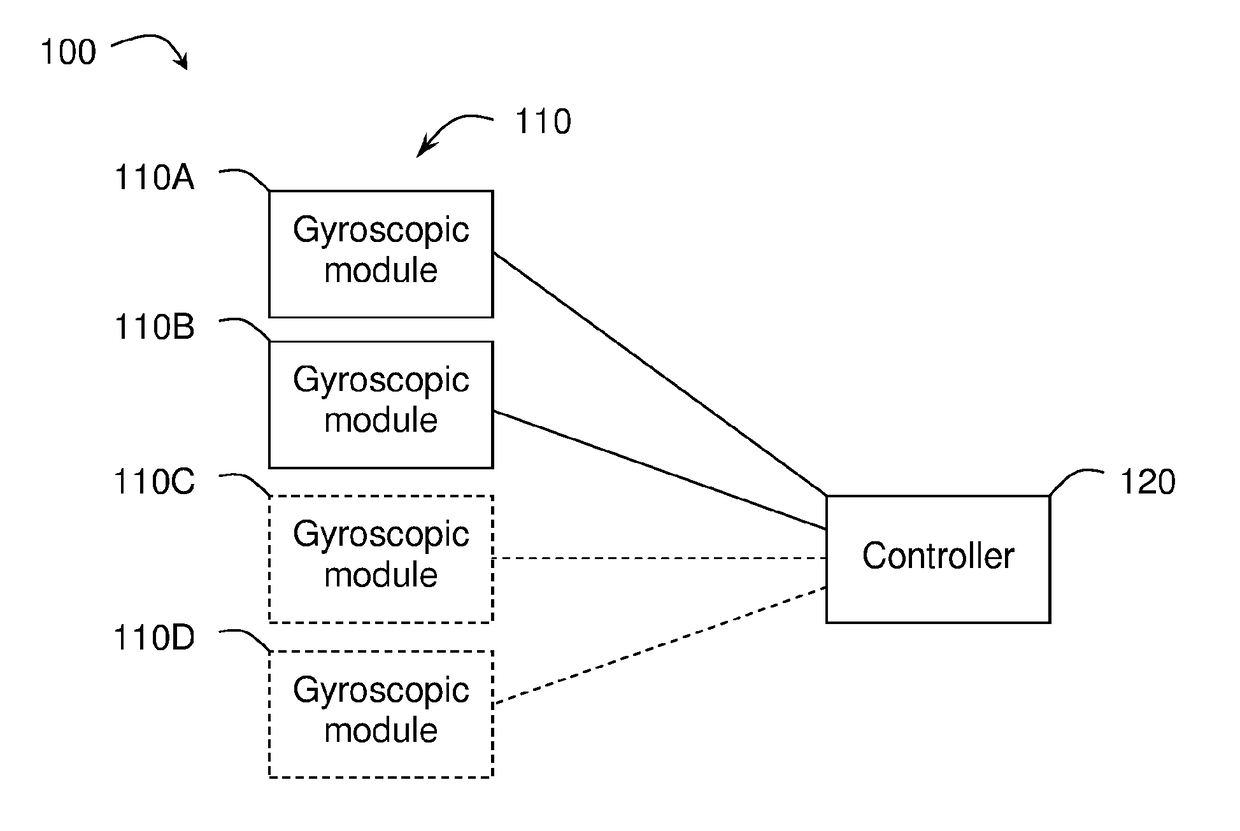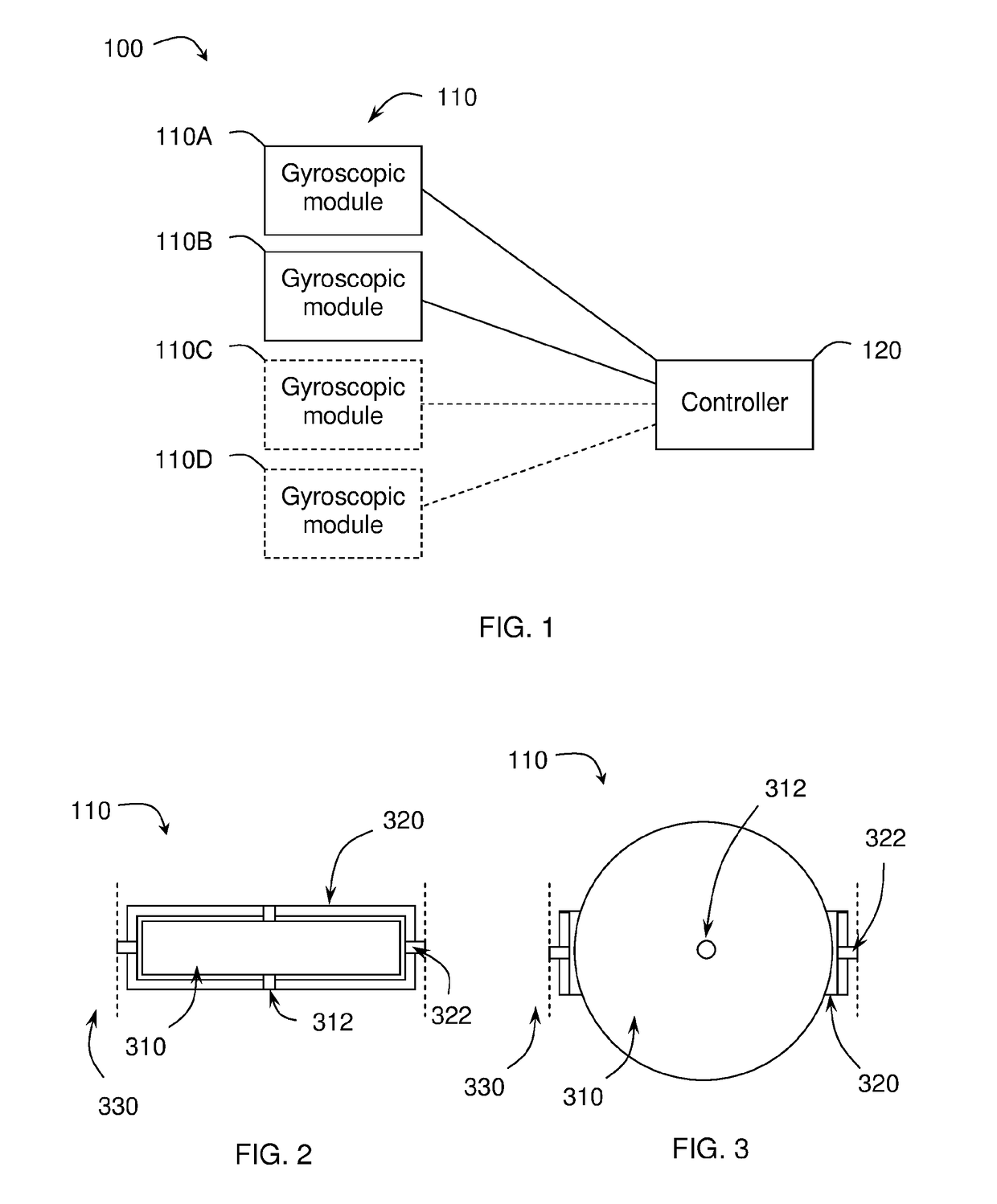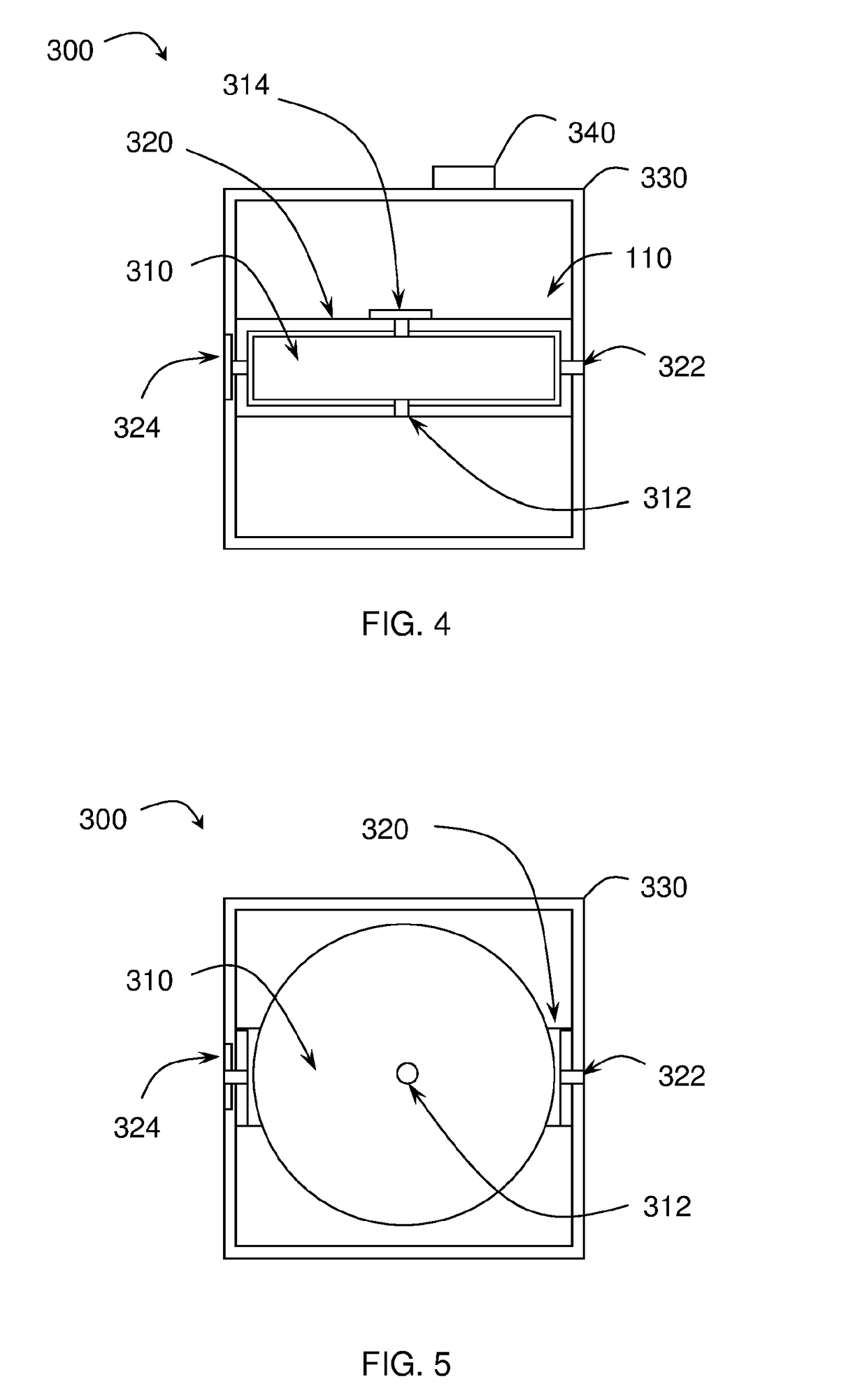Materials management systems and methods
a management system and material technology, applied in the field of material management systems and methods, can solve problems such as misplaced or lost, difficult to track productivity, progress, cost control and safety issues, and pose a risk to surrounding workers and structures
- Summary
- Abstract
- Description
- Claims
- Application Information
AI Technical Summary
Benefits of technology
Problems solved by technology
Method used
Image
Examples
Embodiment Construction
[0131]The present invention relates to materials management systems and methods, and in particular load management systems and methods. In particular, the present invention relates to orienting suspended loads via gyroscopic devices and measuring and generating data about the load and its movements.
[0132]FIG. 1 is a schematic diagram of a system 100 for controlling a rotation of a suspended load according to one embodiment of the invention. The system 100 comprises two or more gyroscopic modules 110 for attachment directly or indirectly to the suspended load. For example, one or more of the gyroscopic modules 110 can be attached directly to the suspended load via an attachment means, such as, a bolt, a clamp or a chain. For example, one or more of the gyroscopic modules 110 can be attached indirectly to the suspended load by attaching them to a load support structure or by attaching them to another gyroscopic module 110 that is attached directly or indirectly to the suspended load. ...
PUM
 Login to View More
Login to View More Abstract
Description
Claims
Application Information
 Login to View More
Login to View More - R&D Engineer
- R&D Manager
- IP Professional
- Industry Leading Data Capabilities
- Powerful AI technology
- Patent DNA Extraction
Browse by: Latest US Patents, China's latest patents, Technical Efficacy Thesaurus, Application Domain, Technology Topic, Popular Technical Reports.
© 2024 PatSnap. All rights reserved.Legal|Privacy policy|Modern Slavery Act Transparency Statement|Sitemap|About US| Contact US: help@patsnap.com










